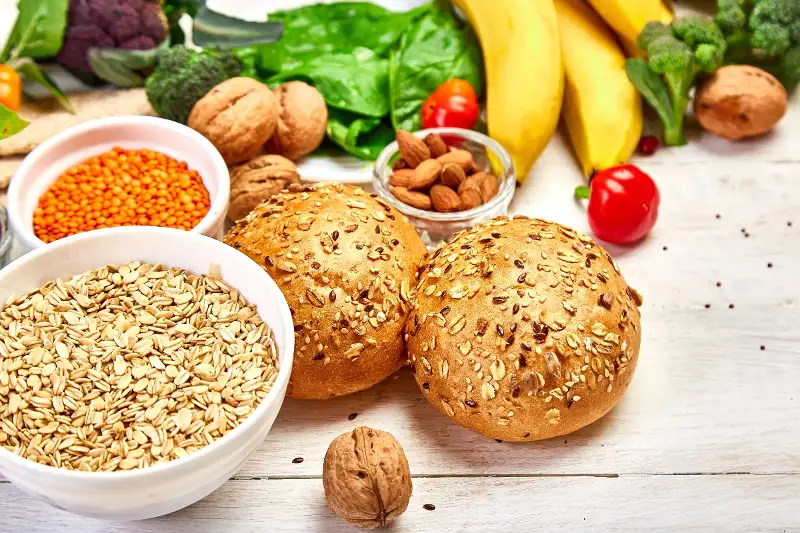It’s something most of us have heard about, and perhaps even feel a touch of guilt over after a less-than-healthy meal: dietary fibre. Yet, for all the chatter about carbs, fats, and proteins, fibre remains somewhat of an unsung hero in the world of nutrition. But what makes it so special, and why do doctors, nutritionists, and health-conscious friends keep telling us to "eat more fibre"? If you think fibre’s only job is to keep things ”moving along”, prepare for a revelation.

What Exactly Is Dietary Fibre?
Dietary fibre is a type of carbohydrate found primarily in plant-based foods, but—here’s the twist—unlike most carbohydrates, fibre isn't digested by our bodies. Picture it as the scaffolding of fruits, vegetables, grains, and legumes, providing both structure and substance. There are essentially two types: soluble and insoluble fibre. Soluble fibre dissolves in water to create a gel-like substance and can help lower blood cholesterol and glucose levels. Insoluble fibre, on the other hand, adds bulk to your stool and ensures smooth sailing through your digestive system.
The Many Hidden Superpowers of Fibre
Sure, fibre’s most famous function is supporting digestive regularity, but it’s hardly a one-trick pony. Did you know, for instance, that fibre is a vital player in heart health? Soluble fibre, abundant in oats, beans, and many fruits, acts like a sponge, absorbing cholesterol as it travels through the digestive tract and helping to prevent it from being absorbed into the bloodstream.
But that’s not all. High-fibre diets have been linked to better blood sugar control—particularly valuable for those at risk of, or managing, type 2 diabetes. How? By slowing down the absorption of sugar, fibre helps prevent sudden spikes and crashes in blood glucose.
Perhaps the most surprising wonder: a happy gut is a healthier, happier you. Fibre acts as food for the trillions of bacteria in your intestines, promoting the growth of beneficial bacteria and supporting your immune system. Your gut microbiome loves a fibre-filled diet, and research continues to show the benefits extend to improved mood and even brain health!

Debunking Common Fibre Myths
Fibre is boring. It’s just bran. It tastes like cardboard. Heard these before? Time to bust the myths. Fibre is surprisingly diverse and delicious. From vibrant berries and crunchy carrots, to smooth avocados and nutty whole grains, fibre-rich foods offer flavours and textures that suit every palate.
Another popular myth: all fibre is created equal. In fact, including both soluble and insoluble sources is key. While some foods, like lentils, are rich in both types, you’ll want to mix up your choices. Fruits, vegetables, legumes, whole grains—the more colours on your plate, the better your fibre profile.
How Much Do You Really Need?
UK health guidelines recommend that adults should aim for at least 30g of fibre daily—though the average Brit only manages about 18g. It’s easier than you think to up your intake: a bowl of porridge for breakfast, a handful of nuts as a snack, adding beans to your lunch salad, or swapping white bread for wholemeal.
Here’s a quick trivia moment: did you know a single medium pear has around 4g of fibre, while a slice of wholemeal bread has roughly 2g? Small swaps and little additions soon add up throughout your day.

Simple Ways to Sneak More Fibre into Your Life
You don’t need to overhaul your entire diet overnight to get more fibre. Start gradually to avoid unwanted bloating, and drink plenty of water as you go.
Try swapping white rice or pasta for wholegrain versions. Keep the skin on fruits and vegetables whenever possible. Add seeds or nuts to your breakfast and sneak lentils into your favourite soup or stew. Even blending spinach into a fruit smoothie is an easy win!
Little by little, your body will thank you—not just with better digestion, but with more energy and vitality.
Whether you’re a self-confessed health nut or just someone who wants to feel their best, fibre deserves a starring role in your daily diet. Its benefits reach far beyond the obvious, shaping heart, gut, and whole-body wellness. So, next time you see that bunch of broccoli or bag of oats, remember—you’re not just filling up your plate, you’re fuelling a healthier, happier you. Isn't it time you gave this nutritional powerhouse the attention it deserves?
